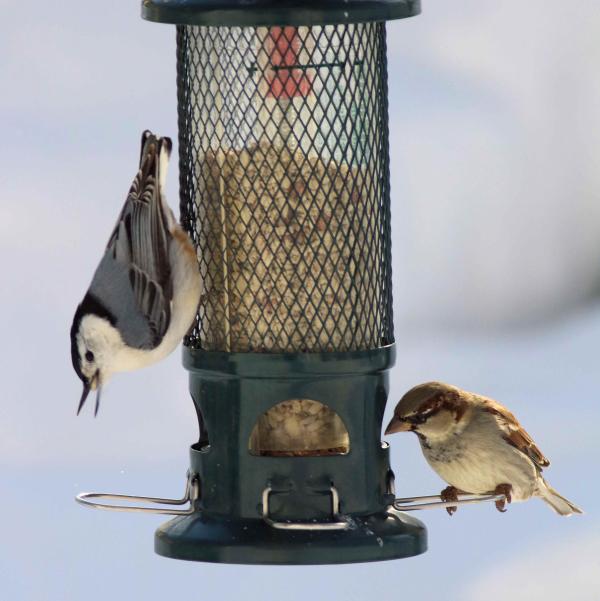
A feeding station should be a clean, colorful, attractive part of your yard, and one way to keep it that way is to think of it as an outdoor photo studio. It’s a way to make sure your feeders are clean and filled with bird food, with fresh water in your bird bath — you know, worthy of a photographic scene. Your feeding station is also the best place to combine your interests in benefitting and attracting birds to a viewing area with photographing birds. Feeding-station photography can provide practice for other bird-photography opportunities, or it may be the best place to photograph some birds.
In addition to keeping your feeding station clean and attractive-looking, using it as a photo studio can inspire you to add some natural elements that you may not have thought about before. For example, you can add some potted plants, including flowering plants, as part of your summer feeding station; and you can even move them around as you wish week to week. Depending on the look you’re trying for, you can add some tropical plants, or emphasize local native vegetation. Other options may be to utilize a large decorative piece of driftwood, a redwood slab, or some meaty cacti.
Simple, inexpensive additions that will make a big difference for photography include installing a couple natural perches for birds to land on, rest, preen, or await their turn at the feeders. The best perches for photography are probably long, thin branches, an inch or more in diameter, that you can poke into the ground wherever you wish. The branches can be on the decorative side; perhaps a white birch branch or a weathered dead branch, but any branch will do. Of course, you can trim side branches or leaves, and cut it to a length that will be photo-friendly, say, four to six feet. The perches will provide your best option for composing photos in your yard because you can position the perches wherever you wish, and you can change the position of any perch any time. You best bet is to place a perch a few feet from a feeder where the sunlight will facilitate well lighted photos.
Feeder Fotos or Au Natural
When photographing birds in your yard, you have two distinct options: Photographing birds at your feeders and bird bath, highlighting elements of your feeding station and feeders as part of photographs; or taking photos in a natural or neutral setting that disguises the fact that you are photographing at your feeding station, out your window, or from your porch or deck; and, of course, you can do both.
Although your home acts as something of a blind, you can also add a photo blind, of sorts. In your yard, you can use existing trees or shrubs as blinds, or you can rig up a blind-like mobile-partition that you can position a small chair behind to get a bit more comfortable during longer photo sessions. You get the idea; you can take it from there.
Consider this article “Part 1” and continue to learn more about backyard photo-options in this issue’s Bird Photography article that emphasizes hummingbird photography, but that you can use to photograph any species. All in all, we’re hoping you will find the ideas presented here an inspiration to expanding the use of your feeding station and the quality of your backyard birding experiences.
Photo 1 — By positioning a couple branches near your feeder, you can ensure that birds like this Blue Jay will perch where the sunlight is best for photography.
Photo 2 — Positioning a suet feeder near an existing tree will provide a good perch for woodpeckers, nuthatches, and other birds to perch before hopping to the feeder.
Photo 3 — You can also include your feeders as part of your bird photos to illustrate your feeding station in action, such as this image of a White-breasted Nuthatch and a House Sparrow.










